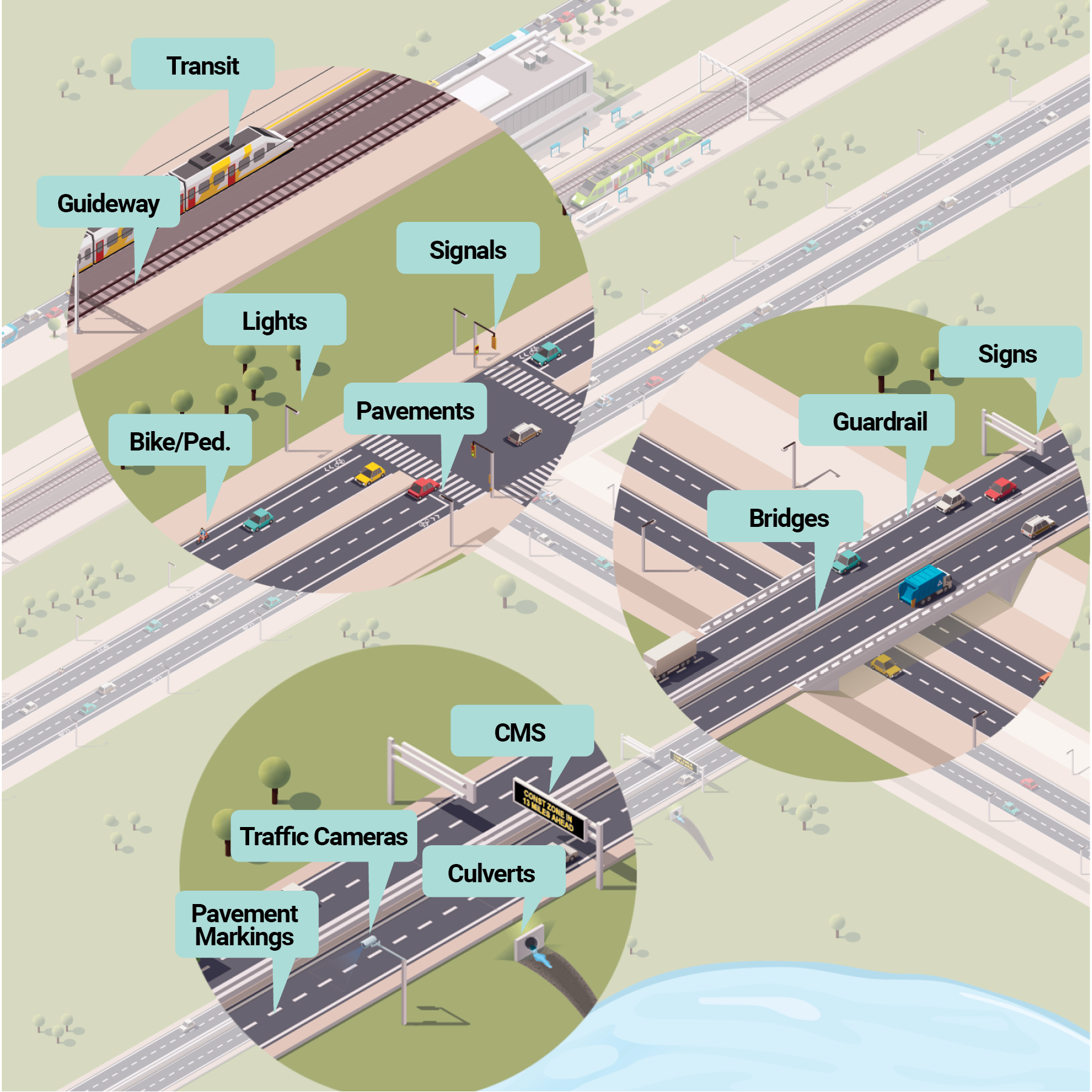- Chapters
-
Chapter 1
Sections - Chapter 1 Home Page
- Chapter PDF
Chapter 1
Quick Links
1.1.1
What is TAM?
As defined by the American Association of State Highway Transportation Officials (AASHTO), TAM is a “strategic and systematic process of operating, maintaining, upgrading, and expanding physical assets effectively throughout their life cycle. It focuses on business and engineering practices for resource allocation and utilization, with the objective of better decision making based upon quality information and well defined objectives.”
TAM is important because of the size and value of the infrastructure that has been built. The total value of the existing inventory of U.S. transportation assets is staggering; based on data from FHWA Highway Statistics, the replacement value of U.S. bridges and pavement alone is over $5 trillion. TAM offers a set of tools and techniques applicable to sustain the condition and performance of the full range of transportation assets.
TAM has been a focus area for DOTs in the U.S. for over 15 years, paralleling similar efforts to improve asset management in infrastructure-intensive industries in the U.S. and abroad. Over this period, transportation agencies have worked to increase their understanding of the value and performance of existing assets; and implement improved asset management systems and approaches.
This guidance responds to the new challenges that have emerged since TAM was first recognized as a critical area in the U.S. transportation community such as: evolving business practices, technology advancements, constrained funding, changing environment, and legislative requirements.
Video Guides to Transit Asset Management Fundamentals
The following videos have been produced by transportation agencies to communicate what TAM is and why it should be important to a transportation agency.
Why Invest in Asset Management?
An introduction to asset management and explanation for why it is so essential.
Iowa Department of Transportation: TAM Defined
Three-minute video that compares preservation and worst-first approaches to asset management.
An Overview of TAM from the Federal Highway Administration
Eight-minute overview of TAM and its benefits (featuring the original TAM ETG members!)

